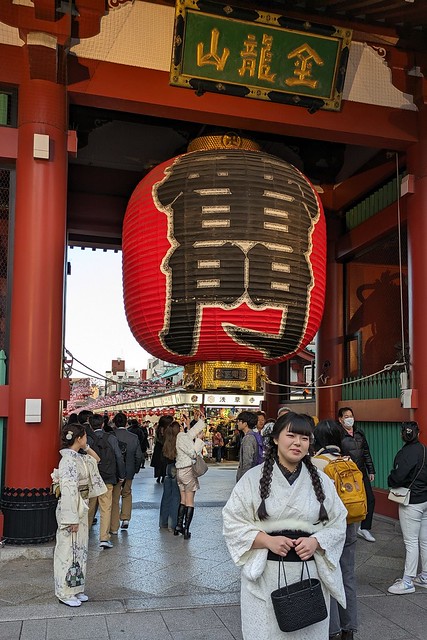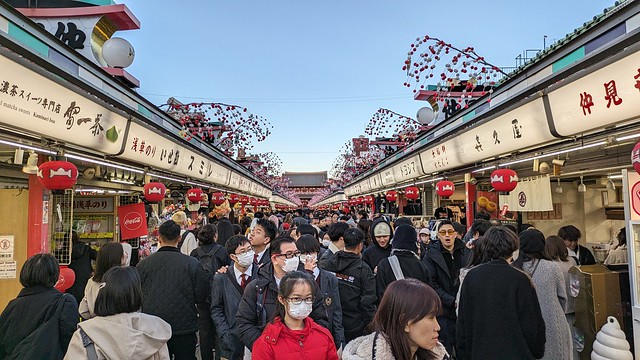While a few individuals in traditional Japanese attire were seen shopping for hagoita, the more prevalent sight was that of young tourists donning kimonos and engaging in photo shoots. Interestingly, kimonos, which originally originated from China, only became the quintessential Japanese attire during the Meiji Restoration in the mid-19th century. This transformation occurred as Japan grappled with the challenge of establishing a national identity in the face of Western invasion.
Furthermore, a noteworthy addition since our last visit is the Tokyo Skytree, which claimed the title of the world's tallest tower in 2011.
Hagoita-Ichi Festival at Sensōji Buddhist Temple



The Sensōji Temple Front Gate and Guardians.


The Market Stalls leading to the Main Temple building.


Hagoita Bats for sale.


At the Inner Gate.

And the lights come up as the sun sets.



Tokyo Skytree "reached its full height of 634 meters (2,080 ft) in March 2011" (wikipedia).



3 comments:
Beautiful pictures of the temple with the open sky in backdrop! Is this a prominent festival in Japan? I also see a demon/god statue which looks very familiar to some of the Hindu gods 😊
@Priya, This festival is NOT a top 25 in Japan. However, the festival that some consider the #1 in Japan happens at *this* temple in May - it's the Sanja Festival..... These particular temple "gods" - there are usually 2 - are fierce as you suspected. They are "guardians" of the temple and are found at the outer gate of many/most Buddhist temples in East Asia. See: https://en.wikipedia.org/wiki/Nio_(Buddhism) Thanks for a great comment!!! -john
The Hagoita Bats are very interesting. I don’t remember seeing them on my two trips to Tokyo in 2016 and 2018. Liz
Post a Comment